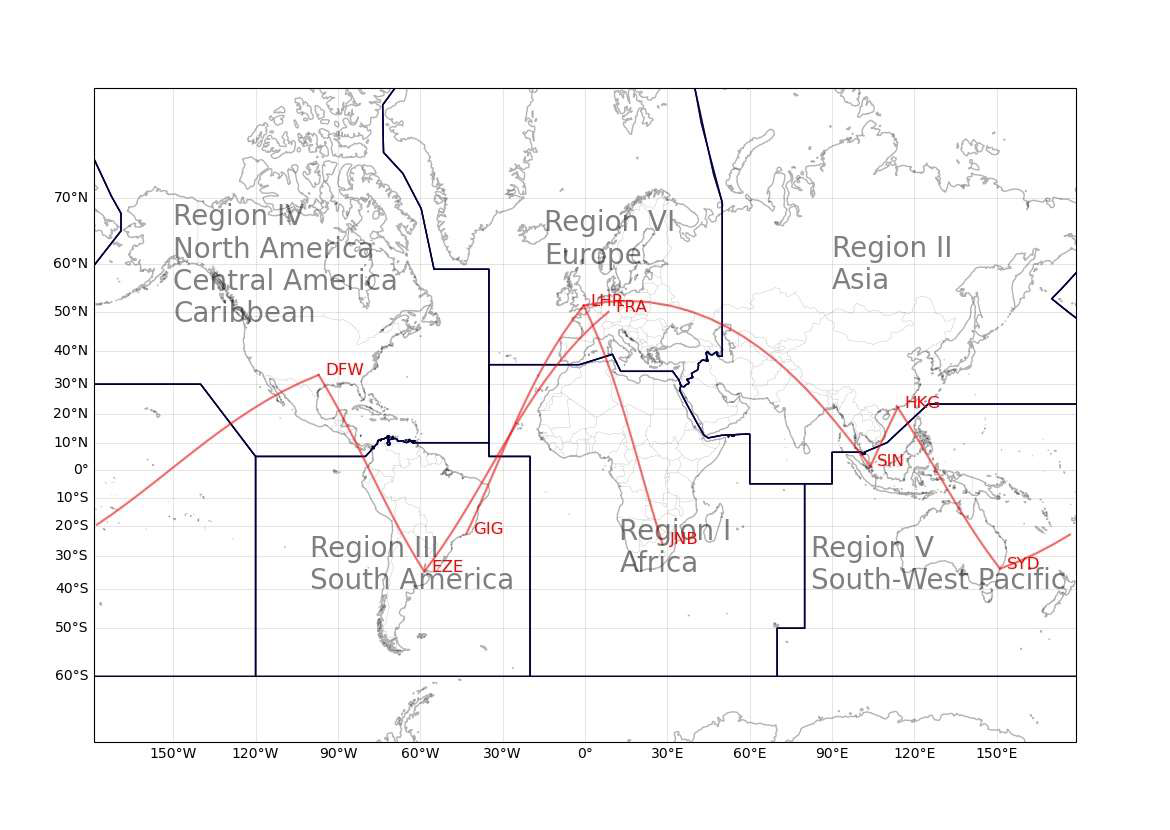Mission
The overall mission of the Project is, through international collaboration, to develop, demonstrate and quantify the benefits of improvements to the forecasting of significant convection and associated hazards. The Project will also devote special attention on developing and demonstrating advancements in probabilistic forecasting and statistical methods (for providing probability levels and other assessments for the end-users), as well as on forecast verification and validation.
Vision
Leveraging advances in meteorological observing, nowcasting and forecasting research to enable the delivery of risk-based, hazard-impact information services that fully meet aviation users’ needs.
Key research areas
In response to end-users’ needs and feedback on AvRDP as expressed in various ICAO and WMO documents, AvRDP2 will focus on scientific advancement in observation, forecasting, warning of meteorological conditions considered hazardous to aviation including capacity building, but not limited to:
- Hazardous Phenomena:
- Significant convection
- Convection-induced turbulence
- High Altitude Ice crystal icing
- Other phenomena including lightning, hail, heavy rain, high wind/windshear
- Improvement in observation and forecasting techniques:
- Advances in observing methods and use of observations
- Seamless forecast (blended nowcast and model forecast or innovative AI techniques along trajectory of city/airport-pair)
- Probabilistic forecast and statistical methods (for uncertainty/confidence assessment)
- Verification and validation:
- Both scientific and user focus
- User focus:
- MET-ATM impact translation and Impact-based decision support modelling
- Capacity development for WMO Members providing new and enhanced aeronautical meteorological services and young meteorologists
How
The Project is to demonstrate the concepts of research-to-operations and science-for-services with the full value chain through collaboration between Research Board, INFCOM and SERCOM. It would involve, for example, airport city-pairs to demonstrate the gate-to-gate use of advanced aviation meteorological information in the future aviation operations environment. It would require seamless meteorological information from ground-based operations, take-off, ascent, cruising, descent, until landing phase to support the safe and efficient flight operations for the whole trajectory. The Project fits well with WMO’s seamless earth system initiative, where “seamless” refers not just to the time-scales from minutes to days in this project, but across earth system domains spanning the whole value chain from observations to users’ benefits. Opportunity would be taken to evaluate the impact of observations, including the benefits of additional observations for the purpose of verification.
While weather hazard information from the World Area Forecast System (WAFS) is available for flight planning, this has to be supplemented by advanced nowcasting information for inflight (tactical) and pre-flight (pre-tactical) decisions. The project will study the blending of nowcasting information on the above-mentioned key meteorological hazards with global and regional models using advanced techniques such as the use of Machine Learning methodology.
Special attention will be placed on the advancement of the use of ensemble techniques in probabilistic forecasting and statistical methods for assessing the uncertainty/ reliability of the information, as well as on verification and validation. There is also a need to link with the Seamless-Global Data Processing and Forecasting System (S-GDPFS) concerning data availability and future modelling improvements. Close connection with the aviation users via, e.g., SC-AVI under SERCOM, would be required to ensure the outcomes are fit-for-purpose.

When
The Project is expected to last 5 years from 2021 -2025 with periodic reviews of progress to be conducted after an Initial phase (around early to mid-2021) and at the mid-point around late 2023. After 2023, the project will enter an operationalization phase focusing on R2O. A final review of the project will be conducted in late 2025.
Deliverables
- The project will consist of the following 6 deliverables.
- D1: Interim Report (by end of 2023). Summary of work so far. Choice of foci for the demonstration phase. Appendix – how we are going to demonstrate and verify these foci
- D2: Prototype products ready May 2024
- D3: Presentation / Forum (or similar) at ET-MHS Meteorological Hazards Conference (Q3/Q4 2024)
- D4: Prototype products demonstrated March 2025
- D5: Prototype products evaluated (Covered by final report)
- D6: Final Report (by December 2025). Recommendations of relevant product(s) / data.



